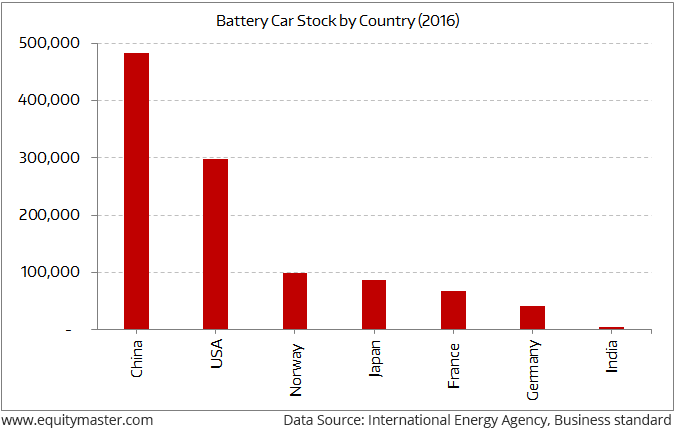- Home
- Todays Market
- Indian Stock Market News October 25, 2018
Sensex Ends Volatile Day in Red; Realty Stocks Lead Losses Thu, 25 Oct Closing
After opening the day in red, share markets in India witnessed volatile trading activity throughout the day and ended the day on a negative note. Sectoral indices traded mixed, with stocks in the realty sector and stocks in the pharma sector, leading the losses.
At the closing bell, the BSE Sensex stood lower by 344 points (down 1%) and the NSE Nifty closed down by 100 points (down 1%). The BSE Mid Cap index ended the day down 0.6%, while the BSE Small Cap index ended the day down by 1%.
The rupee was trading at Rs 73.22 against the US$ in the afternoon session. Oil prices were trading at US$ 76.24 at the time of writing.
Asian stock markets finished mixed. As of the most recent closing prices, the Hang Seng was up by 0.5% and the Shanghai Composite was down by 0.9%. The Nikkei 225 was down by 0.1%. Meanwhile, European markets, too were trading on a mixed note. The FTSE 100 was up by 0.1%. The DAX, was down by 0.8% while the CAC 40 was down by 0.3%
In news from stocks in the auto sector. Electric vehicle (EV) sales in India may soon get a boost as the government is proposing to amend building laws to make them EV friendly.
The government plans to make it mandatory to set up electric vehicle charging stations in residential and commercial buildings and parking lots.
The proposals include offering round the-clock charging infrastructure facility to all electric vehicles in residential buildings, setting up charging bays at 20% capacity of all vehicles, on-spot metering and payment services in both commercial and residential buildings.
The proposal also includes increasing electricity load for all buildings. India plans to shift one-third of its vehicle base to electric fleet by 2030.
In the four-wheeler segment, lack of infrastructure, ambiguity over policy remain a major deterrent, which is holding the segment back.
Is India Prepared to Meet the Ambitious Battery Car Target?
Currently, electric vehicle sales are low in India, rising 37.5% to 22,000 units in the year ended 31 March 2016 from 16,000 in 2014-15. Only 2,000 of these were cars and other four-wheelers, according to automobile lobby group Society of Indian Automobile Manufacturers (Siam).
The government wants to see 6 million electric and hybrid vehicles on Indian roads by 2020 under the National Electric Mobility Mission Plan 2020.
The government is targeting to have all cars propelled by electric engine by 2030. The target is more daunting than in many advanced countries.
According to the industry, the 2030 target would require eight to ten times the global stock of such vehicles. India would need to sell more than 10 million electric cars in 2030, compared to 5,000 electric vehicles India had on the road in 2016.
As you can see from the chart above, India is barely visible compared to other developed countries when it comes to battery cars.
As an article in Business Standard suggests, such a big jump in scale for the auto industry in 13 years seems difficult. The basic infrastructure is missing. There are not enough charging stations. For this massive shift, the charging stations will need to be as ubiquitous as petrol pumps.
Another issue is the price of the lithium ion battery, which constitutes 30% to 40% of the cost of the car. For this plan to succeed, the price of the battery needs to come down.
The auto industry is already facing regulatory headwinds. The shift from BS-IV emission norms to BS-VI has been two years ahead of schedule without an intermediate stage. The government, if it is serious about such ambitious targets, should offer the necessary infrastructure support and do its bit for a smooth transition.
Moving on to news from stocks in the aviation sector. As per the global airlines' body the International Air Transport Association's (IATA) air passenger forecast, India will likely displace the UK to become the third largest aviation market in the world by around 2024.
It also said that the present trends in air transport suggest passenger numbers could double to 8.2 billion in 2037.
However, the Association warned that growth prospects for air transport and the economic benefits driven by aviation could be curtailed if protectionist measures are implemented by governments.
Besides, it pointed out that the Asia-Pacific region will drive the biggest growth with more than half the total number of new passengers in the next 20 years coming from these markets. It noted that the growth is being driven by a combination of continued robust economic growth, improvements in household incomes and favourable population and demographic profiles.
According to the IATA, China will become the largest aviation market, displacing the United States in the mid-2020s. It also said that India will take 3rd place after the US, surpassing the UK around 2024 and Indonesia is forecast to be a standout performer - climbing from the world's 10th largest aviation market in 2017 to the 4th largest by 2030.
As per the report, the aviation market is defined in terms of traffic to, from and within a country.
For information on how to pick stocks that have the potential to deliver big returns, download our special report now!
Read the latest Market Commentary



Equitymaster requests your view! Post a comment on "Sensex Ends Volatile Day in Red; Realty Stocks Lead Losses". Click here!
Comments are moderated by Equitymaster, in accordance with the Terms of Use, and may not appear
on this article until they have been reviewed and deemed appropriate for posting.
In the meantime, you may want to share this article with your friends!